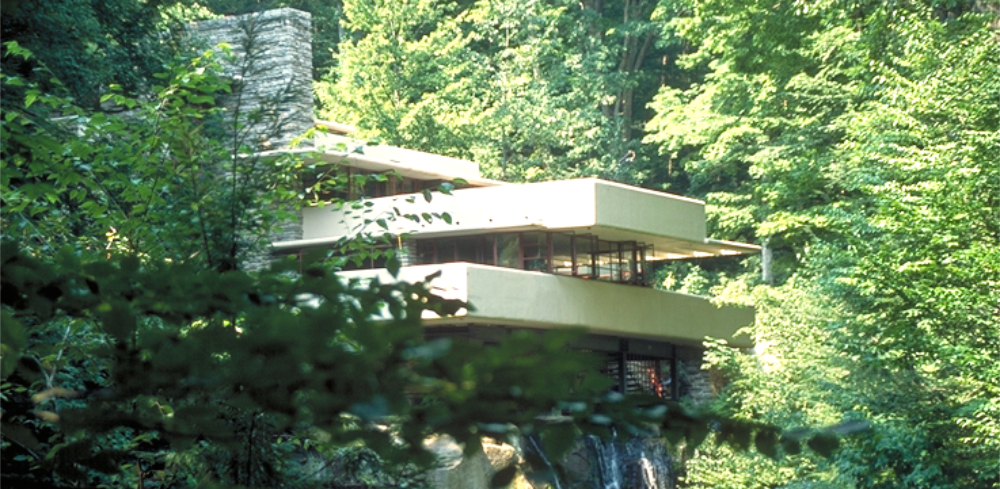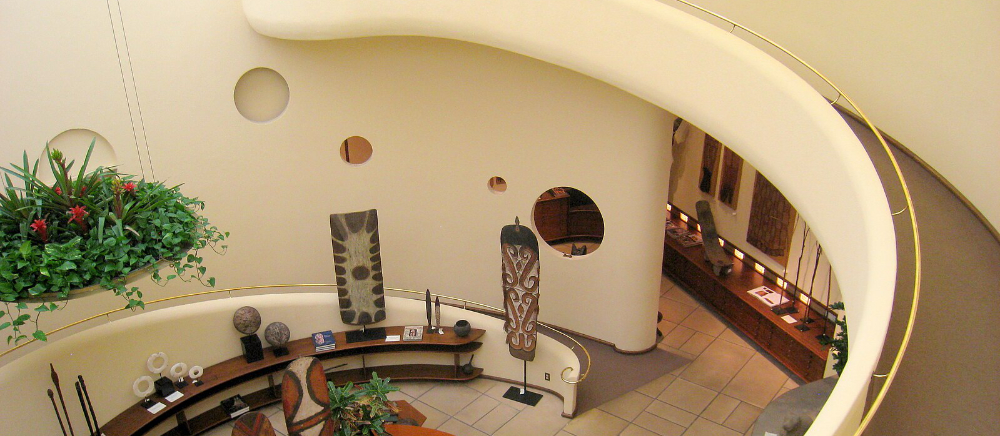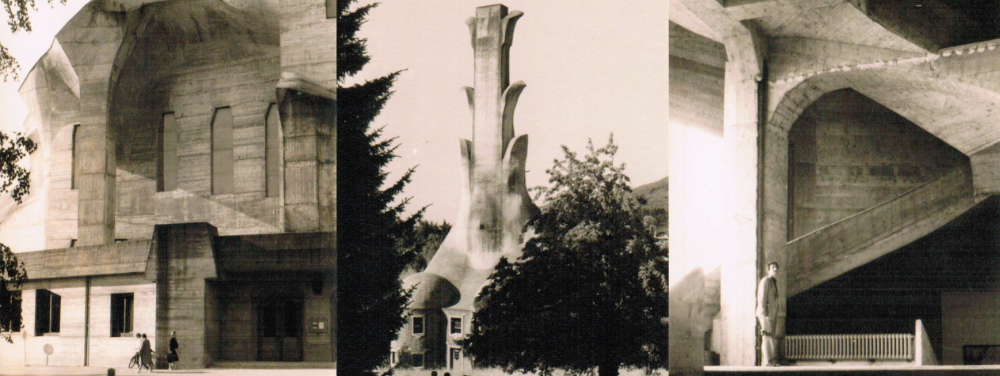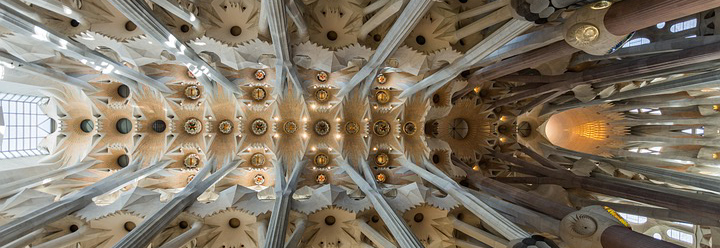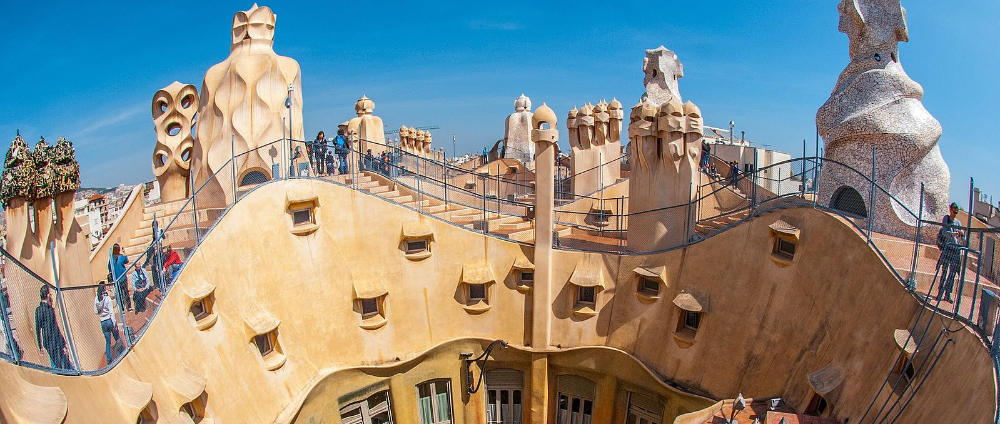Organic architecture
Organic architecture is an architectural style and potentially a philosophy that promotes inspiration from and integrationwith natural surroundings to a greater or lesser degree. This style of architecture may or may not make use of organic forms, though it is likely to be considered to blend in with natural surroundings through interpretation, materiality, and form. The term was coined in the early 1900s by the American architect Frank Lloyd Wright, who was also associated with the Prairie style, and although his buildings might not be considered organic in form, he promoted a philosophy of organic architecture. Prior to this, the architect Louis H. Sullivan in the late 1800's promoted a philosophy of formfollowing function, which was derived from his extensive studies of nature and the implementation of organic ornamentation.
An important figure associated with organic architecture is also the somewhat maverik critic, philosopher, social reformer, architect, esotericist, and natural scientist Rudolph Steiner. Best known today perhaps for the Steiner philosophyof education or Waldorf schools, and as the father of the biodynamic approach to agriculture, he also designed a number of buildings in the early 1900's and introduced his ideas around metamorphosis in architecture. An early example of dometimber architecture was the first Goetheanum he designed, which, due to fire, was redesigned and replaced by the second, concrete and organicallyformed, Goetheanum building, a cultural and spiritual centre for the arts.
It is a much debated term as it is also associated with other architects using higher-tech solutions, such as Frei Otto and Buckminster Fuller. In the early 2000s, David Pearson developed rules for organic architecture, known as the Gaia Charter, in his book The Breaking Wave: New Organic Architecture, in which he references a broad range of movements from Celtic design to Art Nouveau and the Arts and Crafts, as well as the work of Antoni Gaudí.
Twenty years later, John Paull celebrated what he referred to as A Centenary for Organic Architecture in The First Goetheanum, referencing the work of Steiner (Journal of Fine Arts 2020). Today, the term is often associated more readily with organic forms, and although it does not specifically need to be interpreted in this literal sense, it often is.
[edit] Related articles on Designing Buildings
- Architectonics.
- Architectural styles.
- Concept architectural design.
- English architectural stylistic periods.
- Gothic architecture.
- Nature and buildings
- Sustainability in building design and construction.
- The architectural profession.
- The sustainability of construction works.
- Traditional building.
- Urban design.
- What is design?
Featured articles and news
One of the most impressive Victorian architects. Book review.
RTPI leader to become new CIOB Chief Executive Officer
Dr Victoria Hills MRTPI, FICE to take over after Caroline Gumble’s departure.
Social and affordable housing, a long term plan for delivery
The “Delivering a Decade of Renewal for Social and Affordable Housing” strategy sets out future path.
A change to adoptive architecture
Effects of global weather warming on architectural detailing, material choice and human interaction.
The proposed publicly owned and backed subsidiary of Homes England, to facilitate new homes.
How big is the problem and what can we do to mitigate the effects?
Overheating guidance and tools for building designers
A number of cool guides to help with the heat.
The UK's Modern Industrial Strategy: A 10 year plan
Previous consultation criticism, current key elements and general support with some persisting reservations.
Building Safety Regulator reforms
New roles, new staff and a new fast track service pave the way for a single construction regulator.
Architectural Technologist CPDs and Communications
CIAT CPD… and how you can do it!
Cooling centres and cool spaces
Managing extreme heat in cities by directing the public to places for heat stress relief and water sources.
Winter gardens: A brief history and warm variations
Extending the season with glass in different forms and terms.
Restoring Great Yarmouth's Winter Gardens
Transforming one of the least sustainable constructions imaginable.
Construction Skills Mission Board launch sector drive
Newly formed government and industry collaboration set strategy for recruiting an additional 100,000 construction workers a year.
New Architects Code comes into effect in September 2025
ARB Architects Code of Conduct and Practice available with ongoing consultation regarding guidance.
Welsh Skills Body (Medr) launches ambitious plan
The new skills body brings together funding and regulation of tertiary education and research for the devolved nation.
Paul Gandy FCIOB announced as next CIOB President
Former Tilbury Douglas CEO takes helm.






